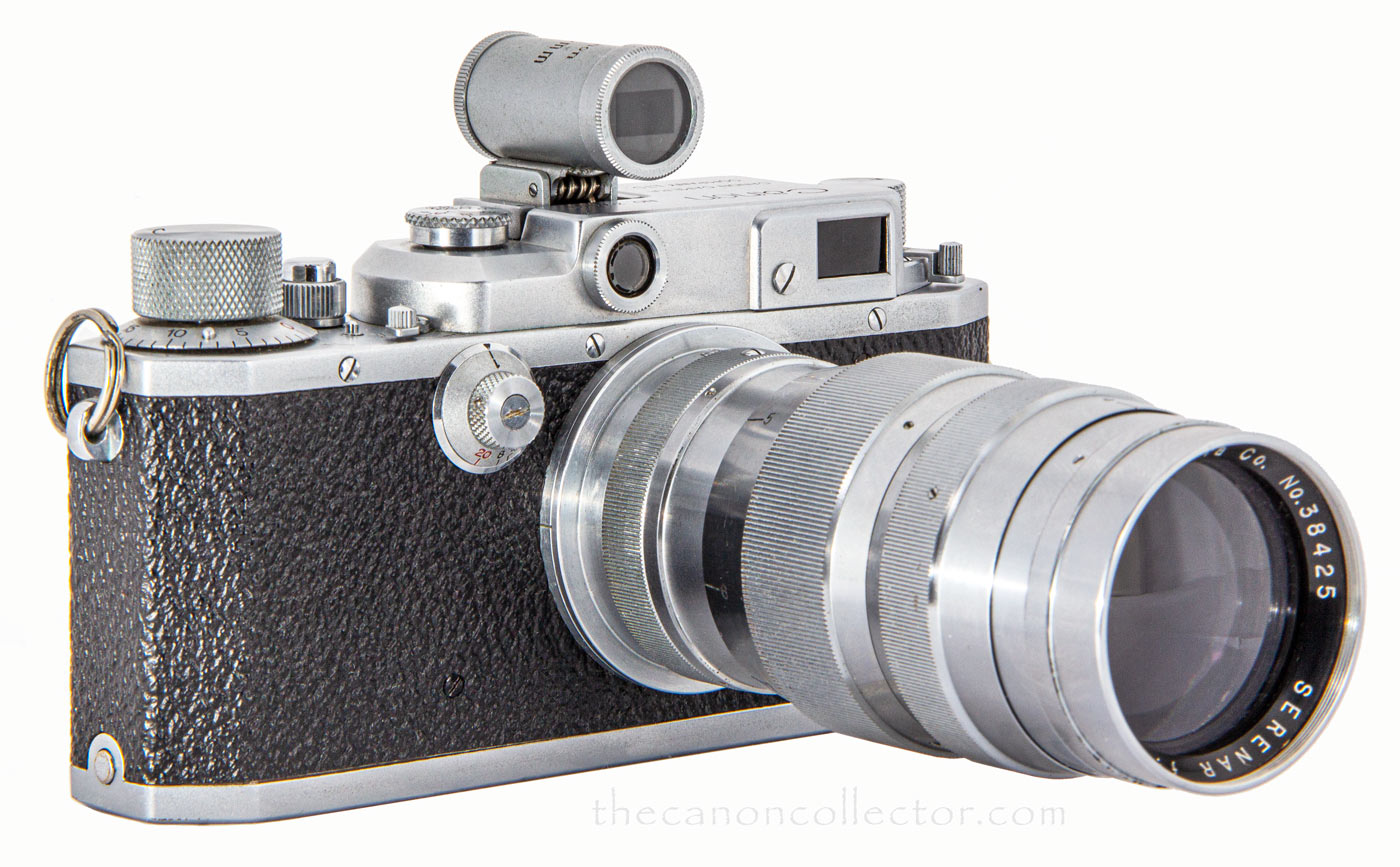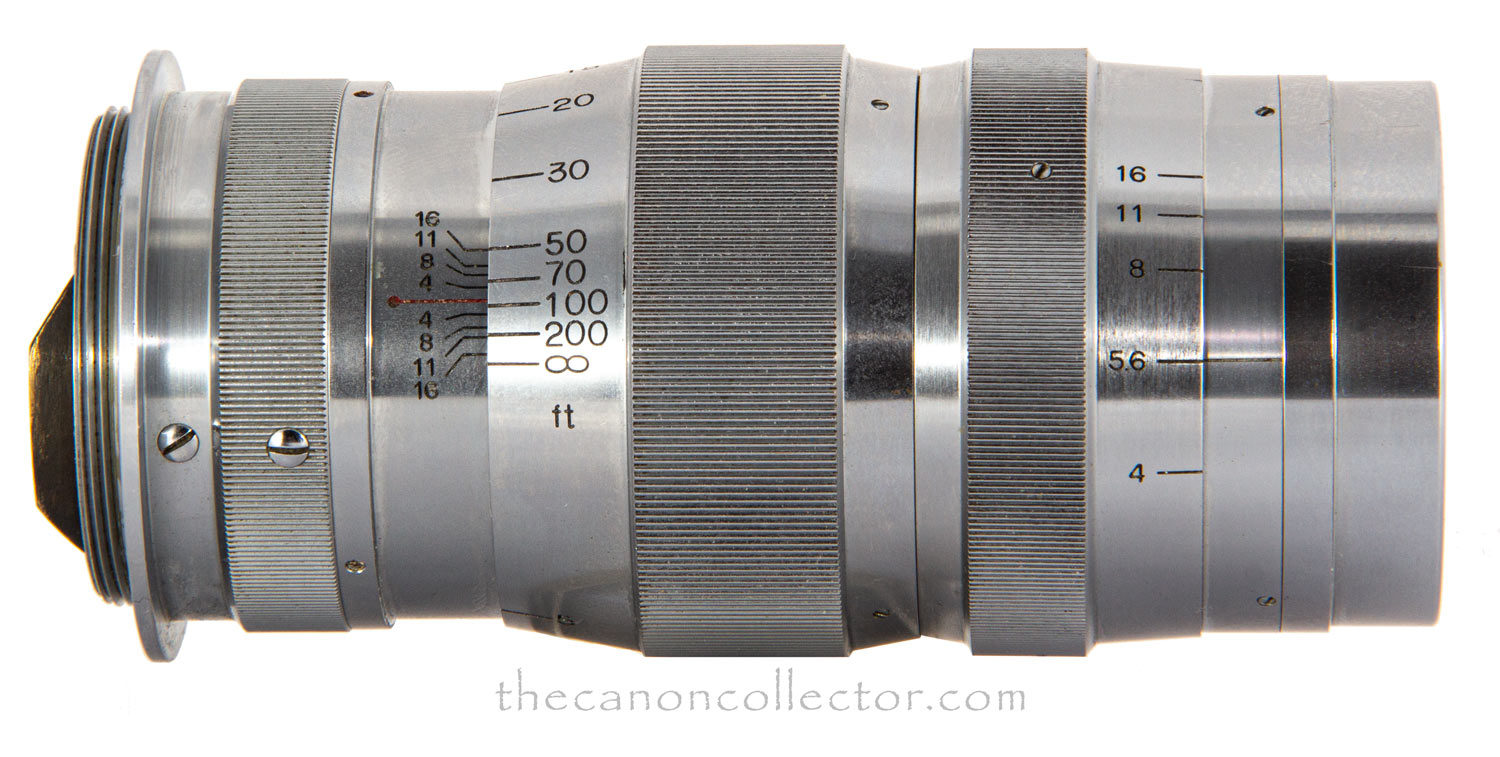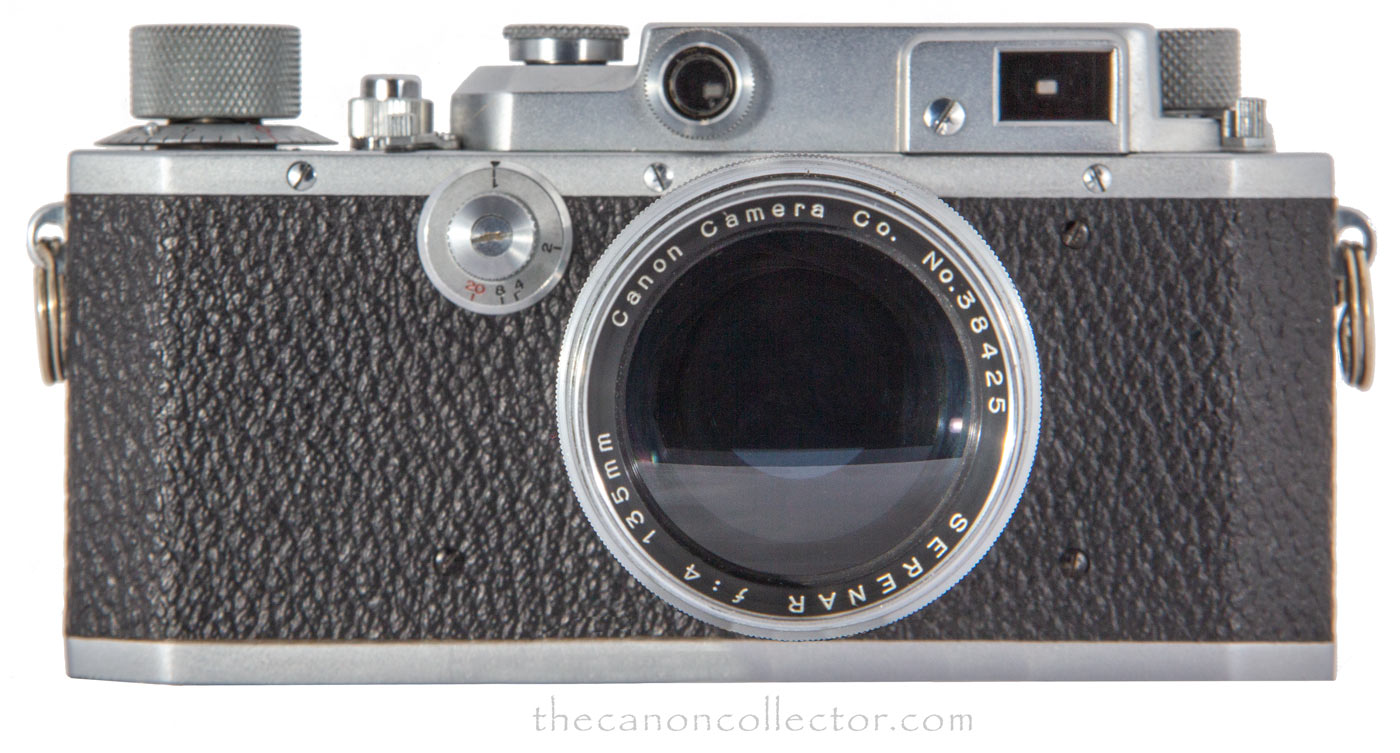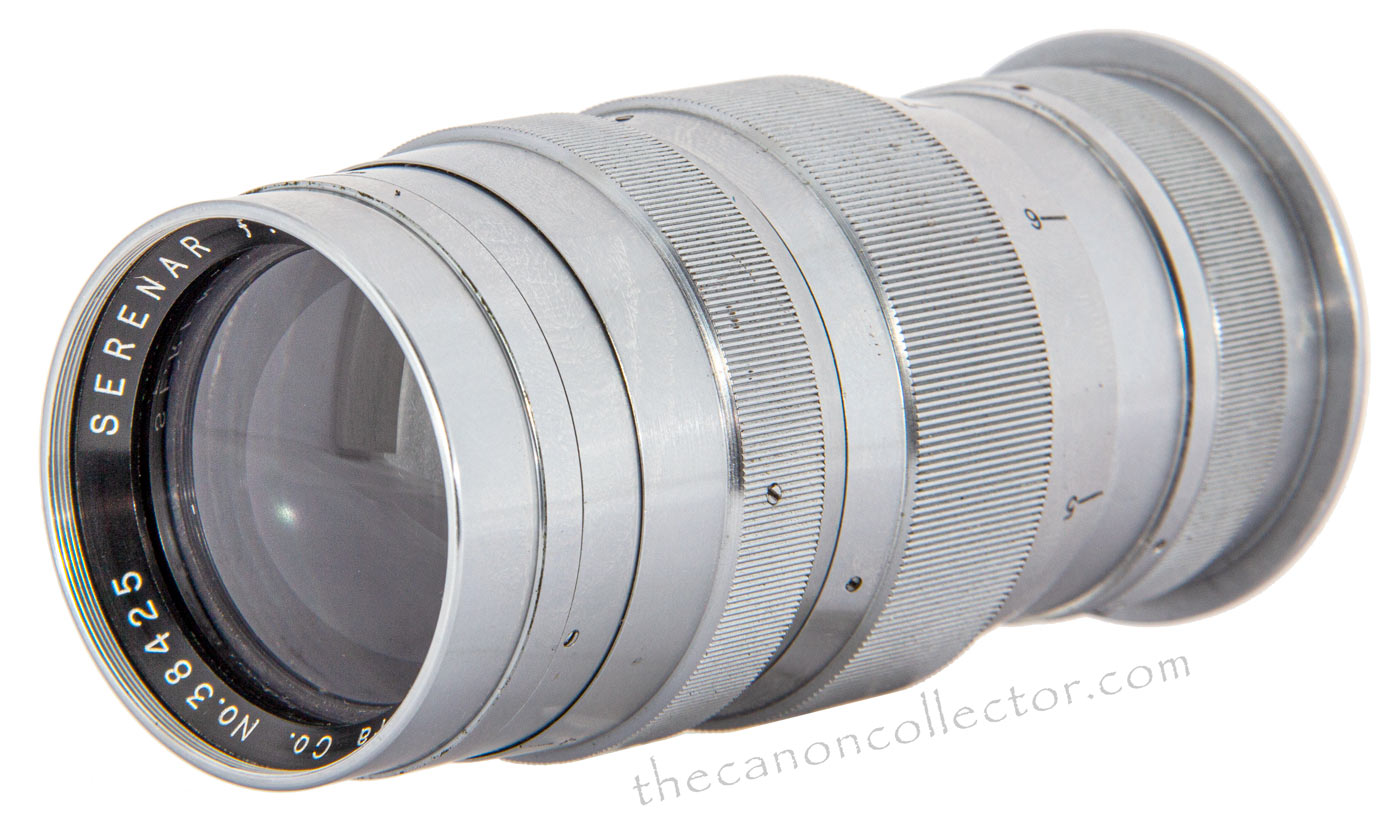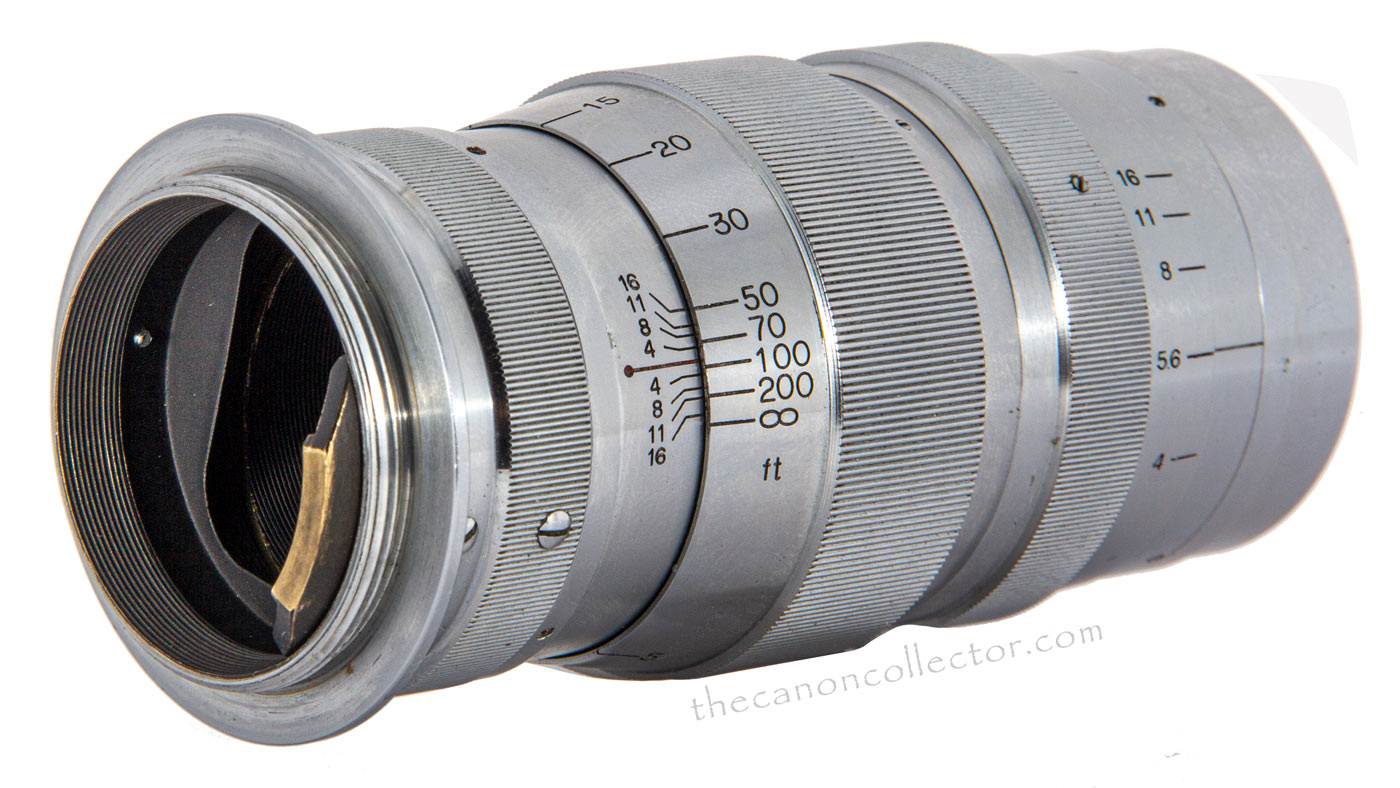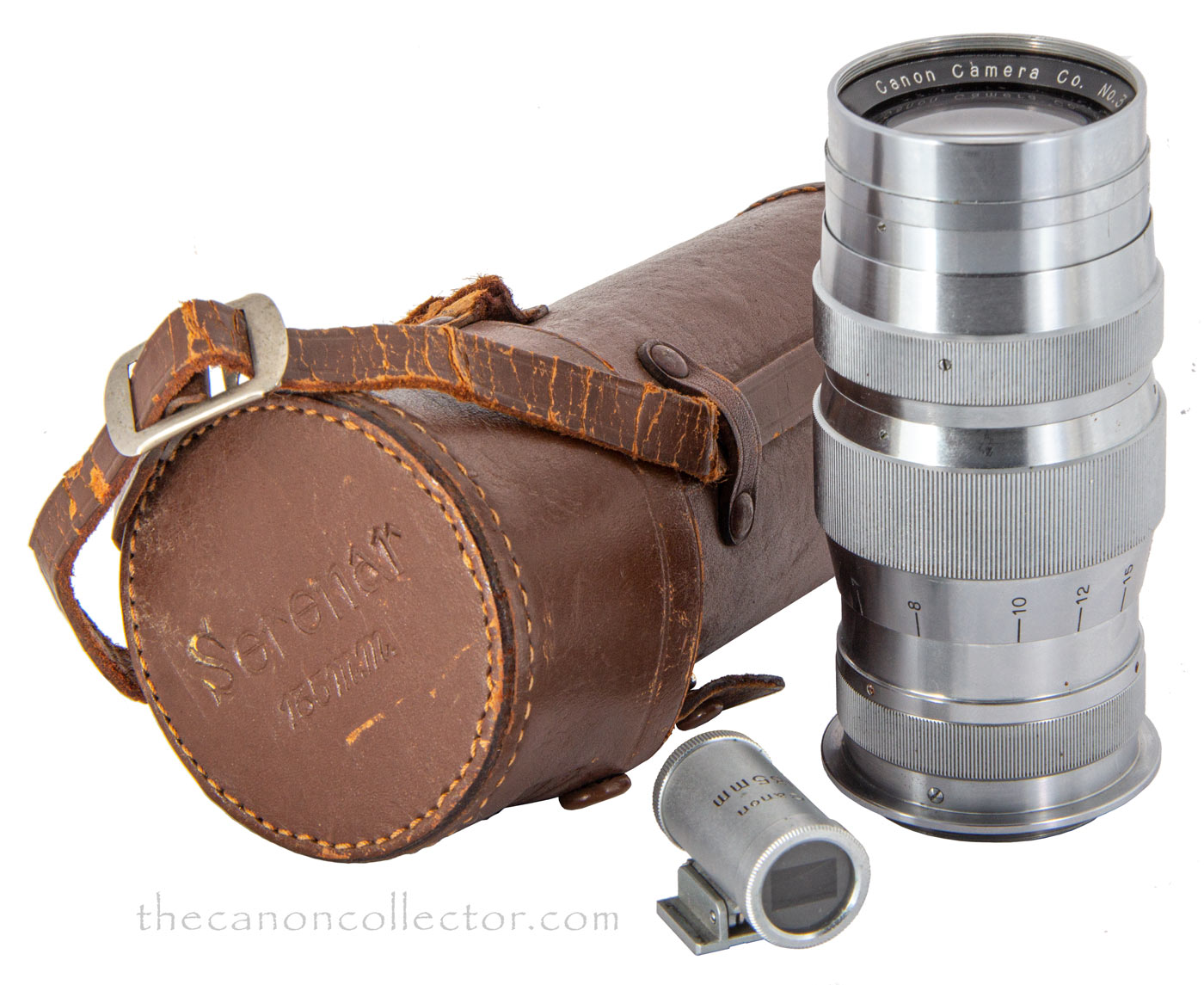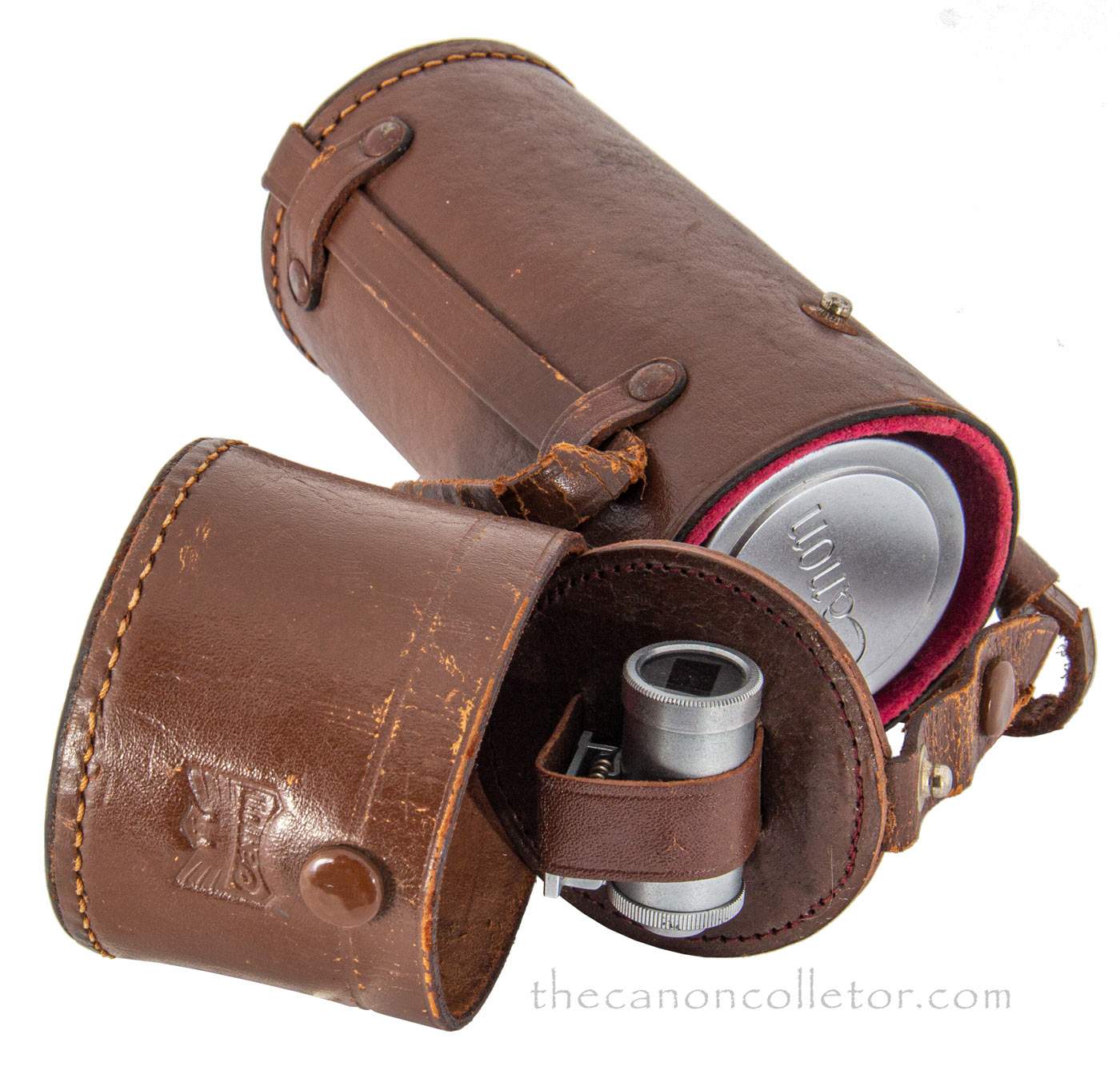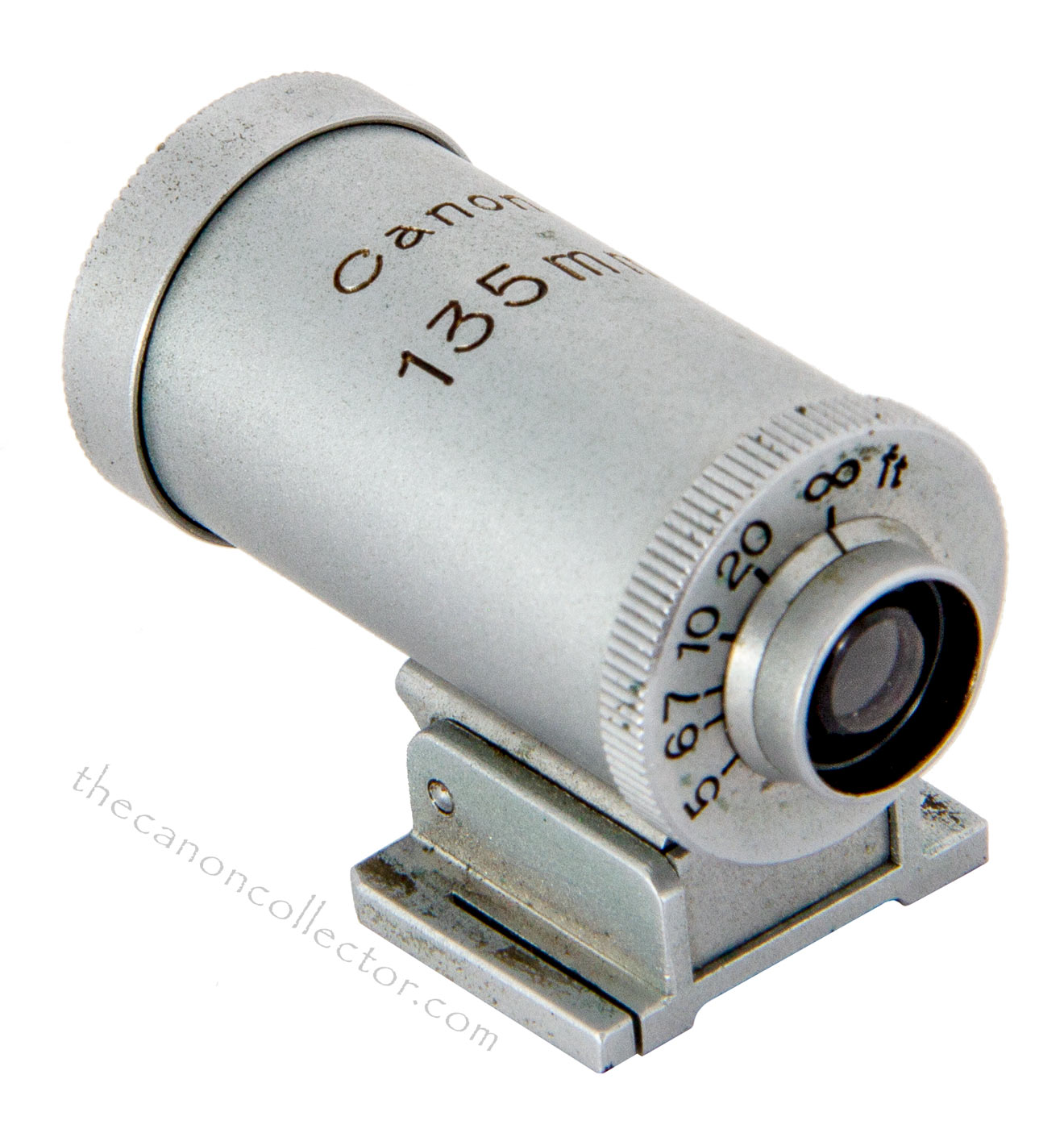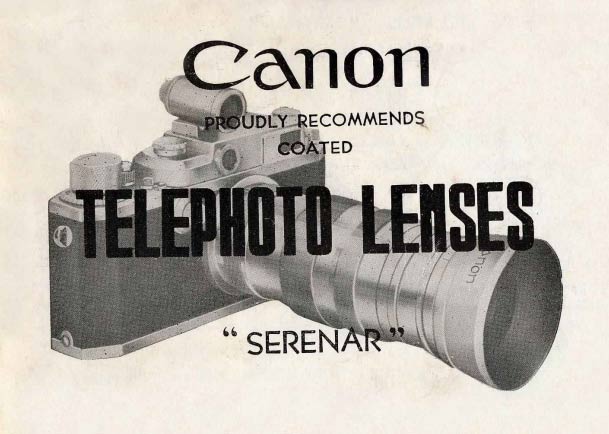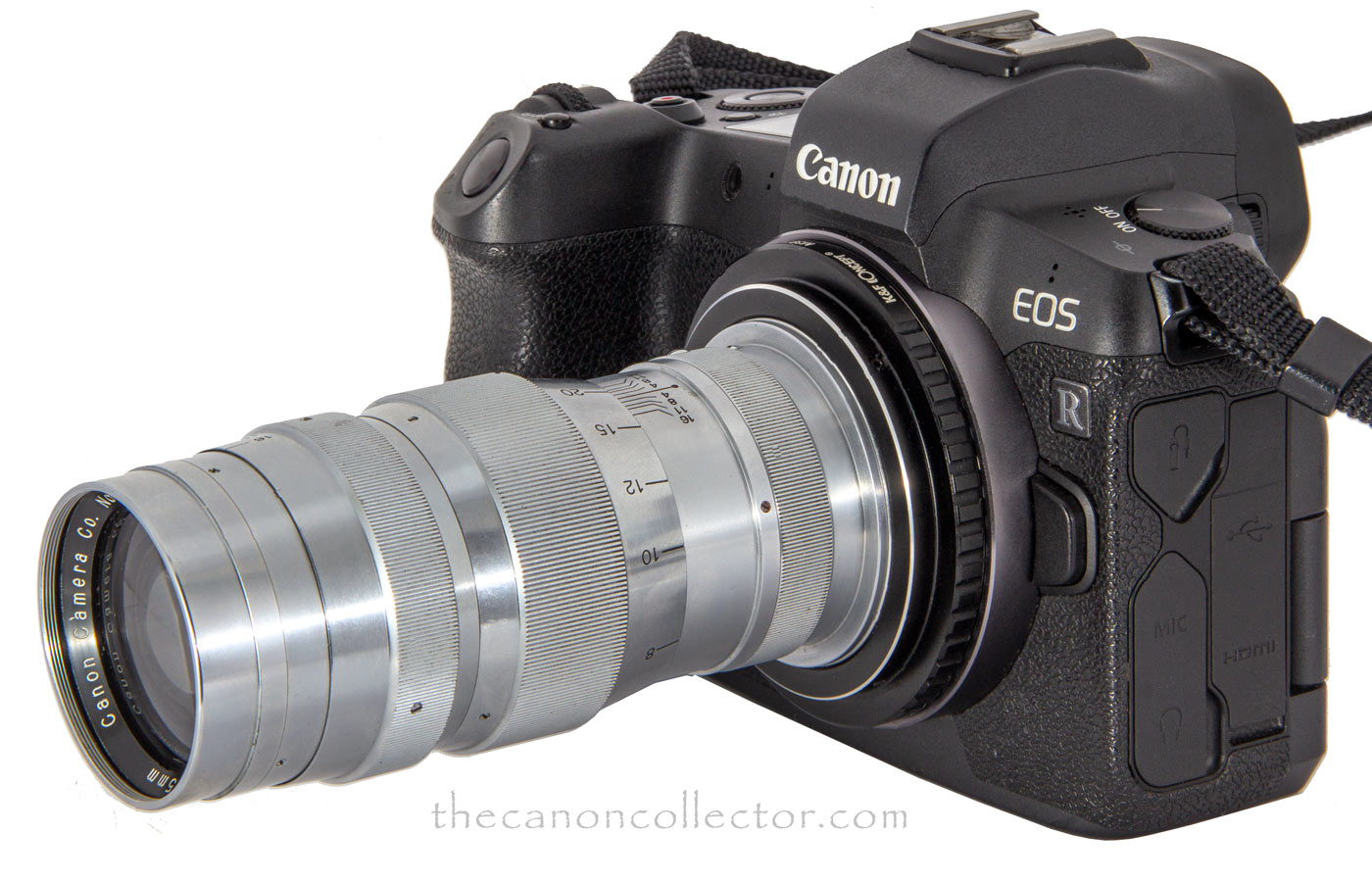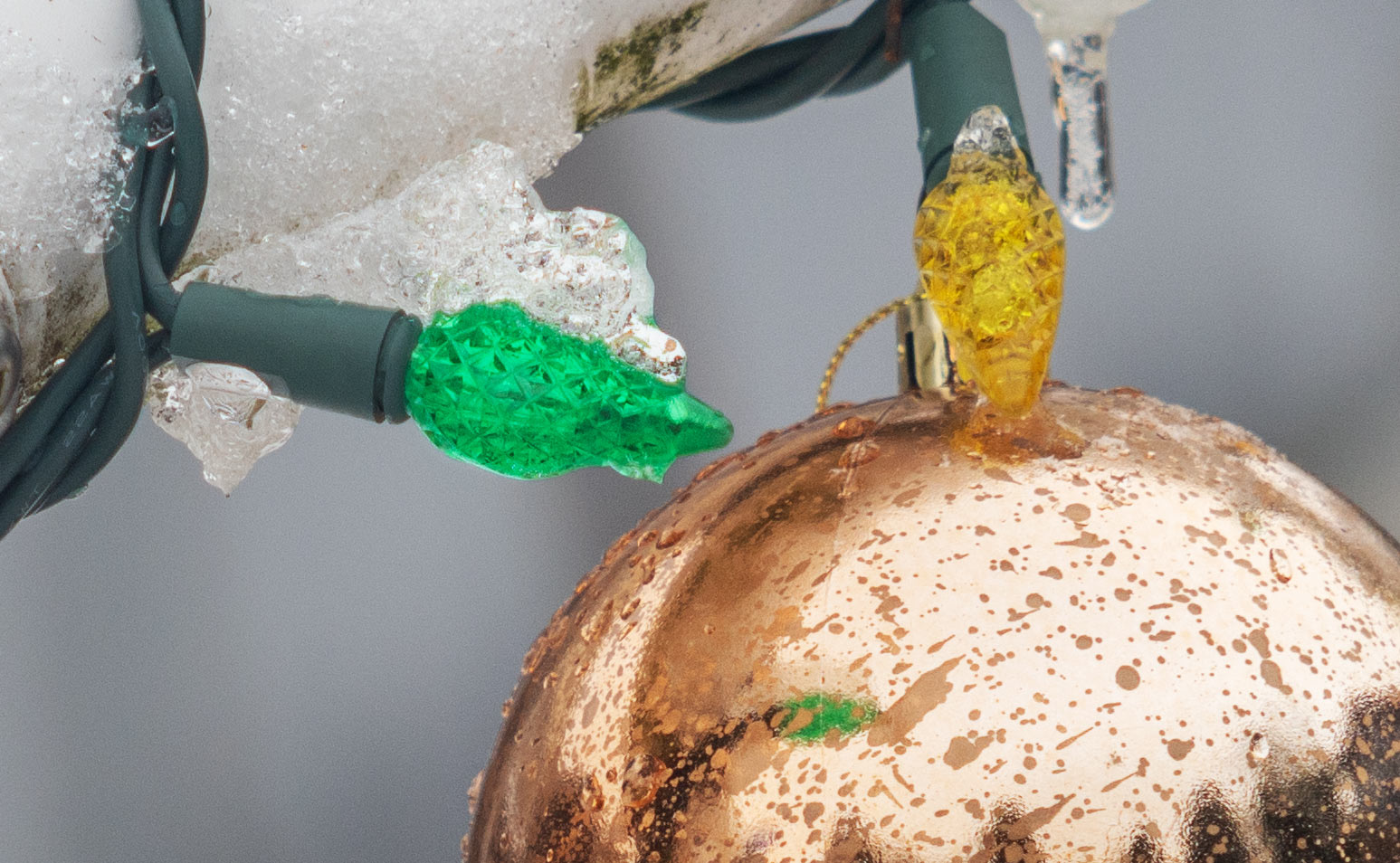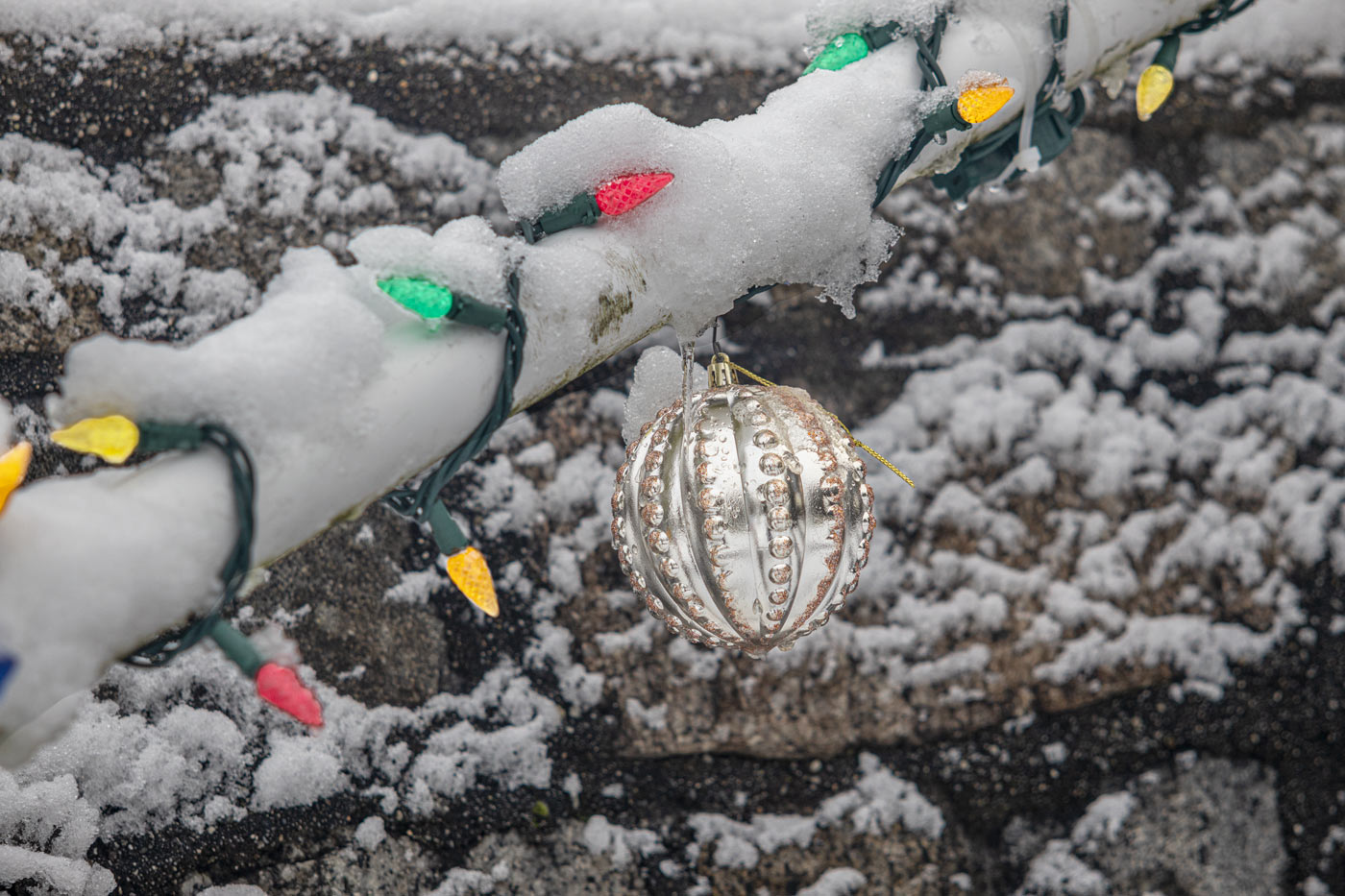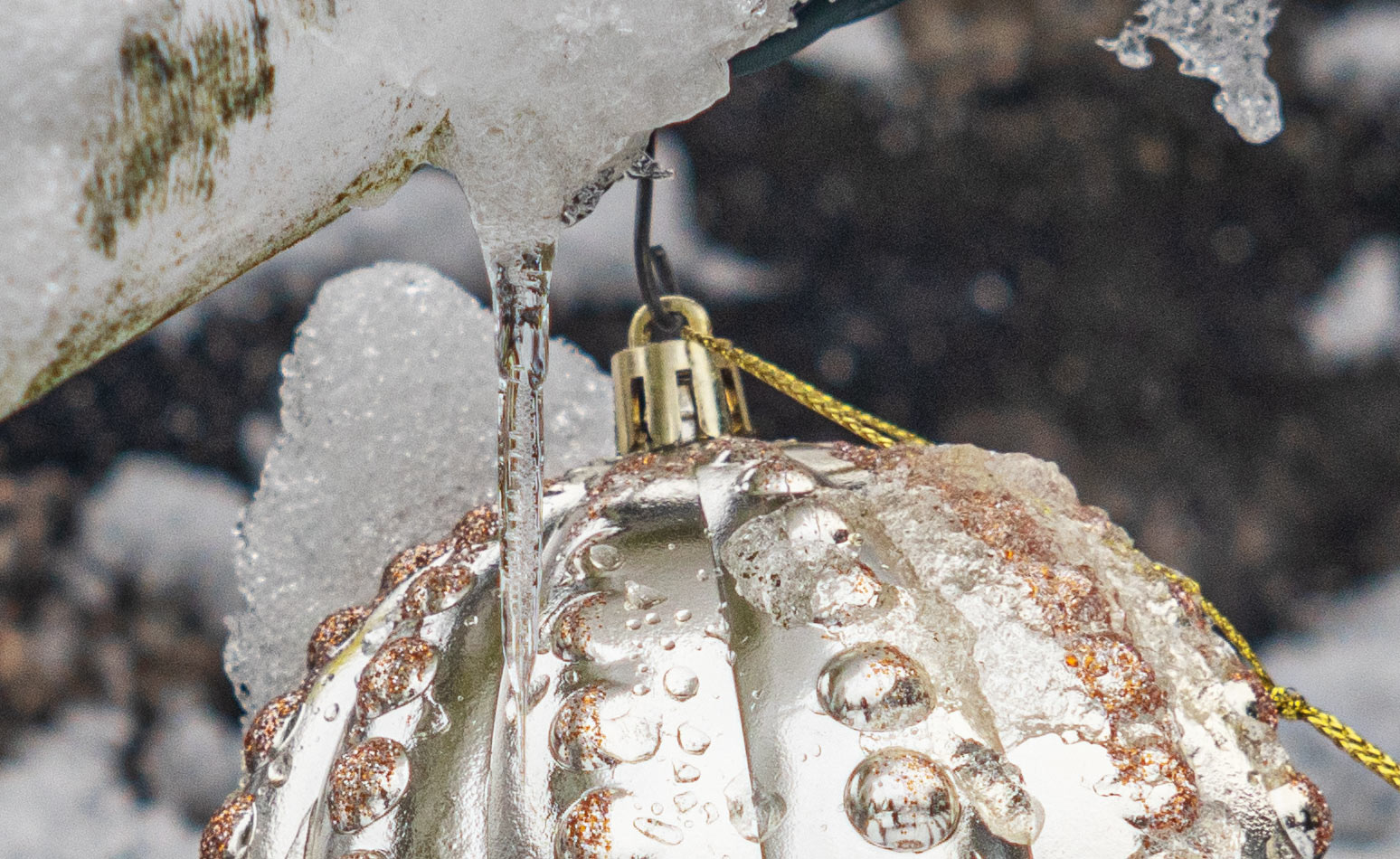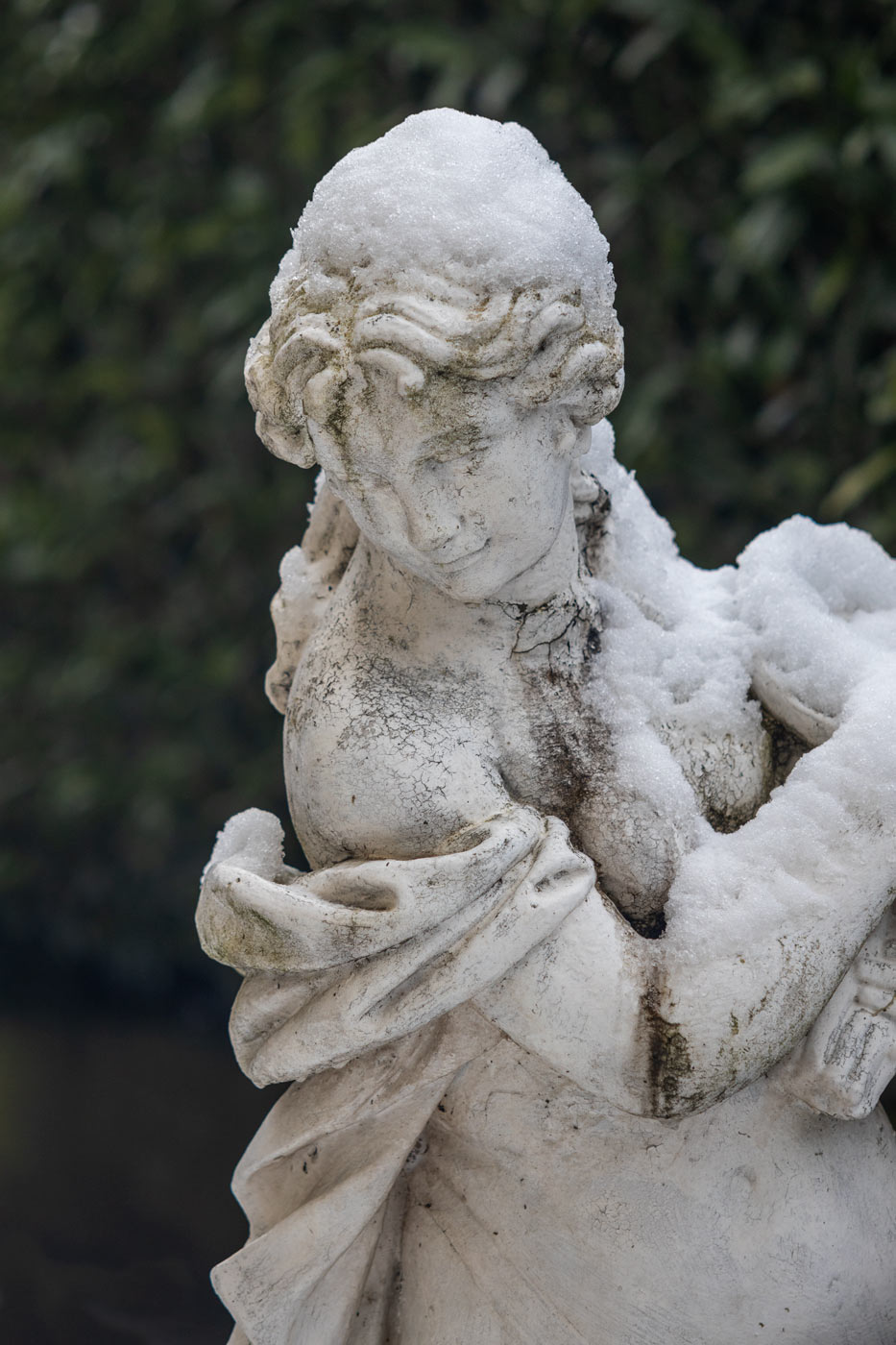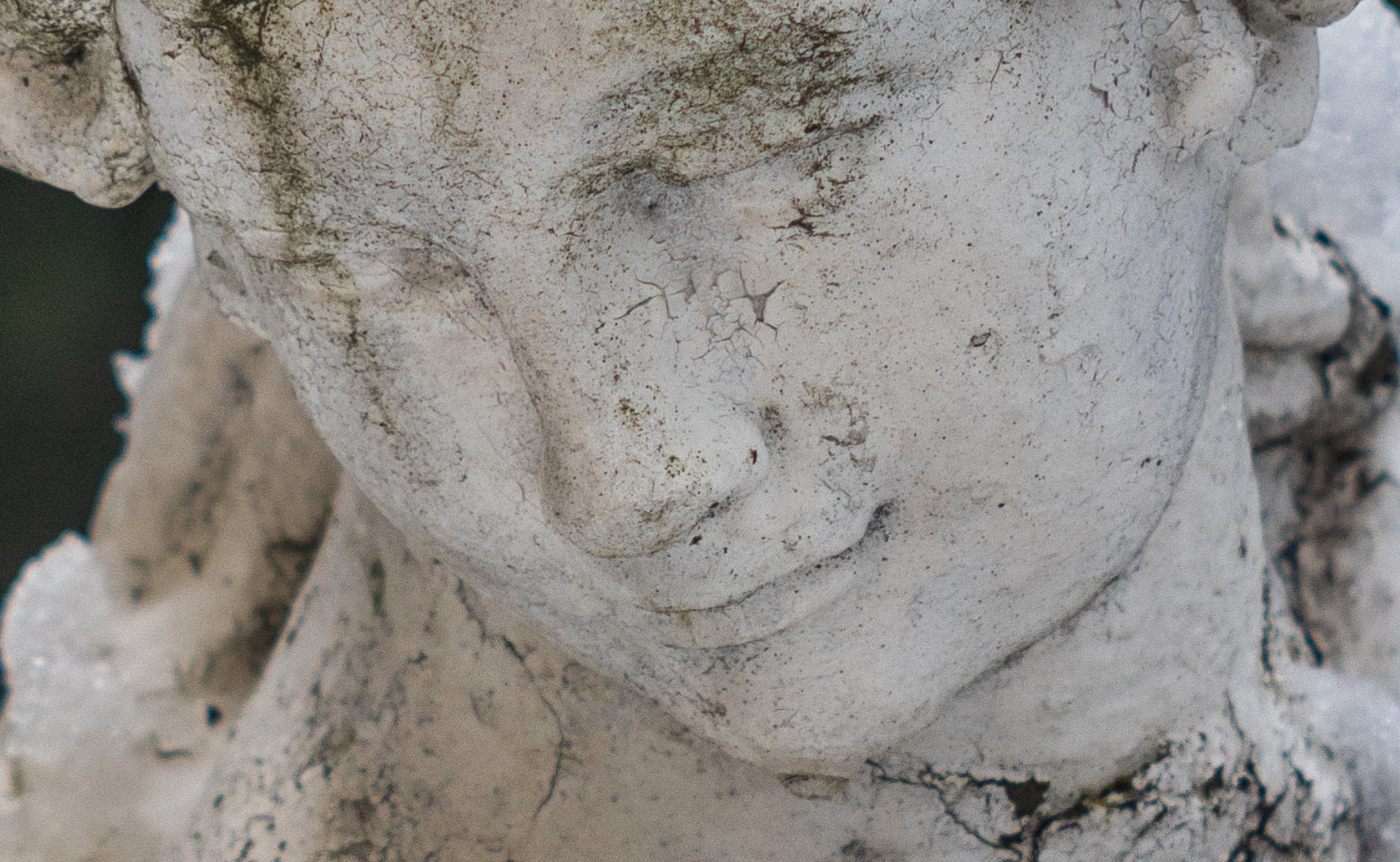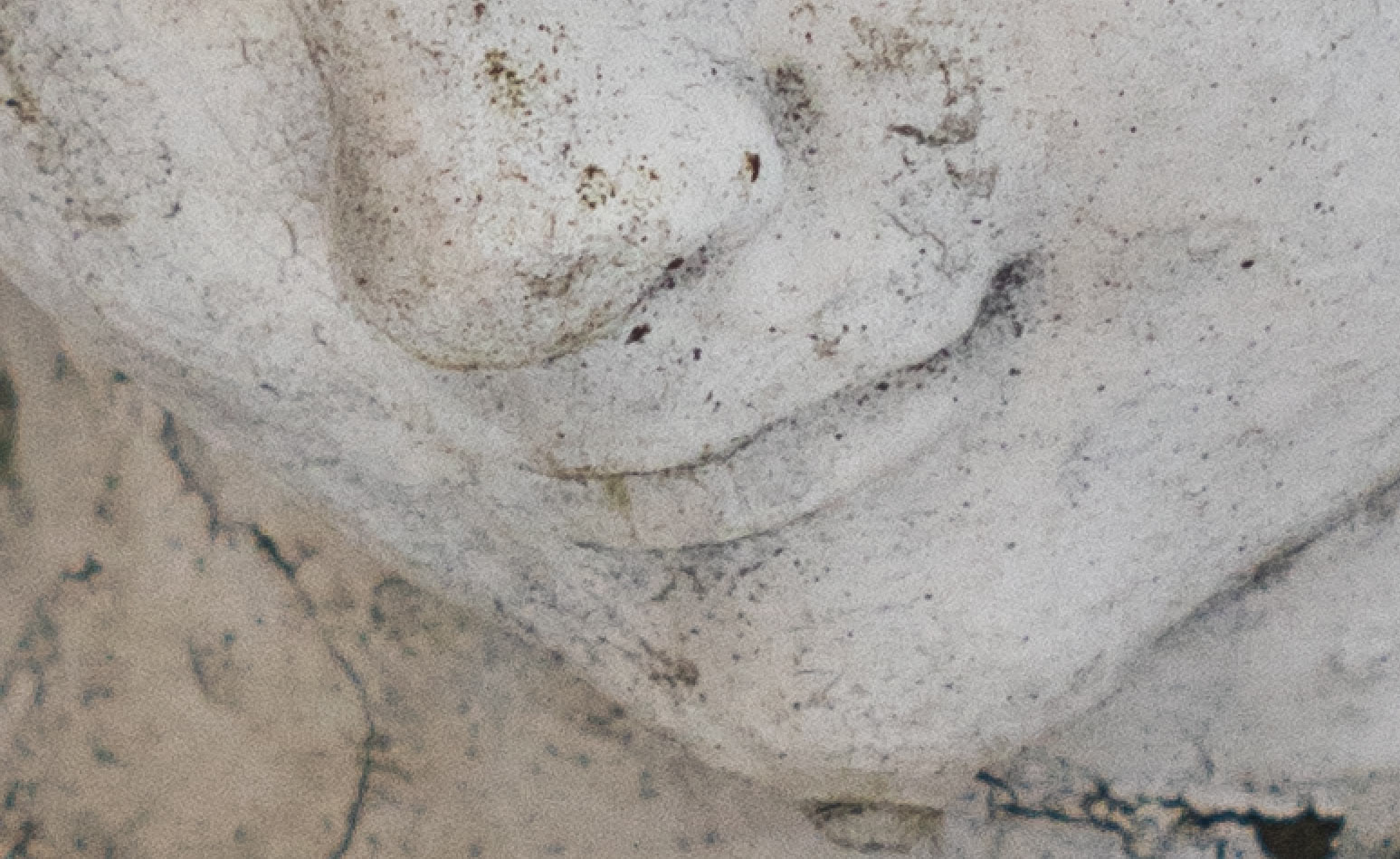My S 135mm 1:4 II (Ser. No. 38426) mounted on my Canon IIB with the 135mm View Finder in the Equipment Shoe.
S 135mm f/4
Almost the Earliest Telephoto Lens
The Canon Museum says that two 135mm f/4 lenses were made but I don’t think
the story was that simple. Canon says
that Seiki Kogaku began development
of this lens as early as 1941 and that
it was to be Canon’s first commercial interchangeable lens. But they tell
us little else. I think in the early days,
after the war, survival of the company
took precedence over record keeping. For what follows I have relied heavily on Kitchingman’s very excellent book on Canon M-39 lenses.
According to Kitchingman (“K” hereafter) it was in March of 1947 that Seiki Kogaku released the second of its commercial lenses, the 135mm f/4. (The first would have been the 50mm 1:3.5 collapsible Serenar.) It seems that while Seiki Kogaku was improving on the lens they sold copies of the various iterations. K lists 10 variations of the two models and does not mention Canon’s claiming only 2 variations were issued. At present I cannot tell where Canon’s named 2nd variation fits into K’s 10 variations.
That said, it appears that the first 5 variations were not rangefinder coupled and had to be focused using the engraved distance scale. I think that this was the first lens referred to by the Canon Museum. The 6th variation was introduced in December of 1947, 9 months later, after around 2,349 uncoupled lenses had been produced. I think this was the second lens referred to by Canon.
Based on Serial Number, 38425, my lens is K’s Type 8 released between April 1949 and December 1951. These lenses were produced until October of 1952 by which time some 14,375 135mm f/4 lenses had been produced. They were replaced with the 135mm f/3.5 which we will discuss another time.
Based on the above, this is my Canon S 135mm f/4 II “Serenar”. As you can see the external condition is excellent. Internally, one lens has fogged a bit and there is a spot of fungus on the rear element. One of these days I will have to take it apart and attempt to clean the lenses. However, from the photos below you can see the effect on the images is just a bit of softness.
On this second model of the F/4 lens the filter ring is 40mm. To be totally accurate identifying the lens refer to Kitchingman’s book.
The name ring does not indicate which f/4 lens this is. For that look at the back to see if it has the rangefinder coupler arm.
The camera Model S-II, the one before the IIB, had no ability to change the magnification in the viewfinder. It was a combined rangefinder – viewfinder that was difficult to use for lenses requiring precision focusing.
The great innovation in the IIB, production of which began in January of 1949, was to add a lever on the left edge of the top deck that allowed magnification to be changed. The “F” mark gave the normal view, suitable for a 50mm lens; the “1.5x” position gave a view that was approximately the field of view of a 135mm lens; the third position “1x” provided a view compatible with a 100mm lens. However, the magnified views also magnified the rangefinder’s overlapping diamond which allowed much more precise focusing. This rangefinder was good enough for a 135mm lens. A few months later Canon began production of the rangefinder coupled 135mm f/4 II lens.
As you can see, (all of these photos are of my lens Ser. No. 38425) my lens has a bright metal finish and is in very good condition. It has four lens elements in three groups. K says that this is a Type 8, if you follow his classifictions, and they fell between Nos. 34800 and 44076. He says they were manufactured between April 1949 and December of 1951 and about 9276 were made.
Minimum f/stop was f/16 and there were engraved stops of 4, 5.6, 8, 11 and 16. There are 13 aperture blades making for a very round opening regardless of setting. The filter thread is 40mm and nominal weight is 555 grams.
An annoying feature is that as the lens is focused the front of the barrel with the f/stop ring rotates. This means that you cannot change the f/stop without disturbing the focus. That can be very worrisome.
The viewfinder in the S-II, and even the IIB, left a lot to be desired. The view to the edges of the frame were difficult to see and the view was small. For this reason the 135mm f/4 was available with a 135mm Viewfinder for the camera equipment shoe. It gave a much improved view but of course with it one had to still rely on the camera’s rangefinder.
The Viewfinder eyepiece has a distance scale on it for parallax adjustment. One simply need set the shooting distance on the scale and the adjustment is made in the view.
The lens was available in a satin lined case or in a brown leather case with a strap. In the lid was a small compartment with an elastic strap to hold in the 135mm viewfinder. The case lid was embossed with “Serenar 135mm” and on the front was the Canon Eagle.
And that is what I have been able to find out about the S 135mm f/4 II Serenar Lens. I am sure there is more that can be said but I will have to find it first. Of course this does not answer the questions “How well does it take pictures?” and “What is it like to use?”. Well, that is where we shall go next.
Shooting with the 135mm f/4 II
To get a feel for this lens we once again employ my Canon R as we have done for so many of these old lenses. The 30 mpx sensor is at least double the resolution of any film an early Canon rangefinder could have used so we can really look at the performance of the lens. And we don’t have to develop any film!
I took pictures of a brick wall and they were instructive but not very interesting. So I will just verbally report on those images. The lens shows even illumination with the slightest vignetting at f/4. The center is really sharp with a noticeable fall off in the corners. There is little discernable barrel distortion. However, stop down to f/5.6 and the vignetting disappears. The image shows a distinct increase in both contrast and sharpness. At f/8
the lens is very sharp across the field with good contrast. The performance is very good and I feel this is a very impressive lens. Surprising considering the simplicity of the design.
When you focus this lens the whole front of the barrel turns which means the front element and the apreture setting ring rotate as well. Because I am focusing through the lens I want the lens wide open to focus and then I stop dow to take the picture. But moving the aperture ring will rotate the barrel and throw the focus off. This was very annoying. Of course on a range finder this is less of a problem because you do not focus through the lens. However, if you ant to use a polarizing filter focus becomes and issue again if the polarizing screen is attached to the lens.
So, let’s look at some images. As I write this page it is Christmas in the middle of a Canadian winter. There is snow on the ground and the skies are a leaden grey. Finding something interesting to photograph was not easy. But here we are.
This is the full frame of an image of a Christmas decoration on a handrail in our front yard. It is shot at f/8 focused on the ornament.
Another decoration on the same handrail. This is the full frame as it came from the camera with adjustments only to color and contrast.
This is about 80% of the full frame but cropped to center the image better. This too was shot at f/8 using focus peaking while the lens was open at f/4.
As I said earlier, my lens suffers from a slight fogging of the front element and there is a spot of fungus on a rear element. The effect on the images has been minor, as you can see. Just a slight softness of the image. And in spite of these issues you can easily see that this is a quality lens and more than adequate for the films that would have captured its images.
This website is the work of R. Flynn Marr who is solely responsible for its contents which are subject to his claim of copyright. User Manuals, Brochures and Advertising Materials of Canon and other manufacturers available on this site are subject to the copyright claims and are the property of Canon and other manufacturers and they are offered here for personal use only.

